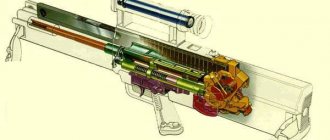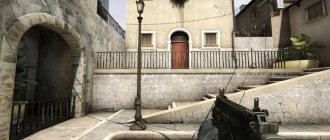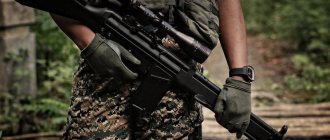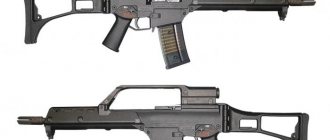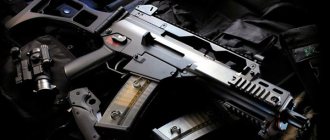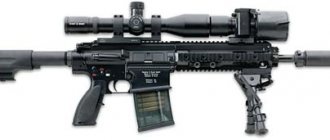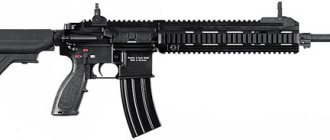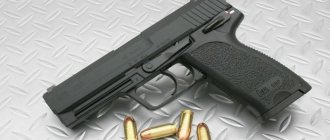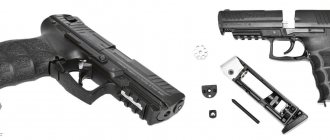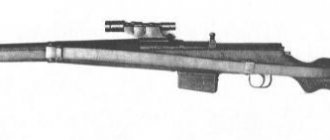| This article need additional quotes for verification . |
Type of semi-automatic rifle
| Heckler and Koch SL8 | |
| HK SL8-5 | |
| Type | Semi-automatic rifle |
| Place of origin | Germany |
| Service history | |
| Used | German army reservists |
| Production history | |
| Manufacturer | Heckler and Koch |
| Produced | 1998–present |
| Options | SL8, SL8-1, SL8-4, SL8-5, SL8-6, SL8-10, SL9SD, R8 |
| Characteristics | |
| Weight | 3.9 kg (8.6 lb) with magazine |
| Length | 980 mm (39 in) with magazine |
| Barrel length | 510 mm (20 inches) |
| Height | 250 mm (9.8 in) with magazine |
| Cartridge | .223 Remington, 5.56×45mm NATO |
| Action | Gas, short stroke piston, rotary lock bolt |
| Rate of fire | Semi-automatic |
| Feeding system | Single stack 10 rounds and double stack 30 rounds, removable polymer box magazine |
| Attractions | adjustable iron sights and removable MIL-STD-1913 rail. G36 sighting systems are optional. |
The Heckler and Koch SL8
This is a semi-automatic rifle manufactured by Heckler and Koch. This is the civilian version of the Heckler & Koch G36.[1]
The rifle fires the .223 Remington or 5.56×45mm NATO cartridge and is fed from a detachable magazine that holds 10, 20, or 30 rounds (depending on rifle variant). Unlike earlier types of HK rifles, this is not a roller bolt lock, but rather a rotating lug bolt system as seen on the AR-18.
Design
To accommodate the G36 for the civilian market, its pistol grip and folding stock were replaced with a fixed thumbhole stock. The receiver has also been modified to prevent the folding stock from being attached. Additionally, to comply with the Gun Control Act of 1968, SL8 rifles exported to the United States were modified so that they would not accept staggered 20- and 30-round G36 magazines, only single 10-round magazines would be accepted. Other modifications were made to the SL8, including a lighter trigger pull, an adjustable cheekpiece and buttplate for customization, and a heavier, more accurate barrel. The SL8 does not come with a carry handle and built-in optics like the G36, although they can be purchased aftermarket and mounted on the weapon.
American owners can modify their SL8 to accept 30-round G36 magazines and 100-round drum magazines. This requires replacing the SL8 single-lug bolt head with a G36 dual-lug bolt head, replacing the magazine well, and modifying the receiver to accept a wider magazine body. However, such modifications to SL8 rifles (or indeed any imported rifles) have serious consequences under the Gun Control Act of 1968, which prohibits (among other things) the assembly of imported parts into rifles that cannot themselves be imported.[2]
And then the Heckler-Koch comes out to meet him!
In fact, they tried to adapt a similar system to the ARK in the USA more than once, but it was the meticulous Germans who significantly modified the gas exhaust system and the three-section gas piston - so that the weapon would work reliably with both a weakened and a reinforced powder charge and that excess gas would be released (at the same time they patented ).
The Etohekler-Kokhovtsy scheme was used in the experimental XM8 rifle, which took part in the OICW program, from there it migrated to the standard German G36 rifle.
Experimental XM8 rifle
Standard weapon of the Bundeswehr G36
But the Germans most likely understood well: the appearance of the G36 may seem overly futuristic to potential customers. This meant that the money invested in the project might not pay off (the experience with the G11 was still fresh). Therefore, at the same time, Heckler-Koch was engaged in polishing and improving other people’s weapons: the ill-fated British L85A1 and the American M16.
They managed to bring the island product to the state of L85A2 and, crossing themselves, shoved it back to the British - the Teutonic genius could do little to oppose the British one. But in the case of the M16, the result was much better: the patented rod fell into place as if it were original. The upper part of the receiver (in common parlance - upper) also had to be modified.
Upper NK416 assembled
Initially, the idea was to leave the butt and lower part of the receiver untouched. For the standard M16, only the upper with a barrel could be replaced, but later the Heckler-Kokhovites decided not to waste time on trifles: to earn money this way. The current versions of the NK416 are fully adapted to a composite three-link gas rod, and the Germans also claim that they have improved everything - of course, for the better: factory tests produced ten thousand shots in a row without a single delay.
In 2004, at comparative shooting, the NK 416 also performed well - so much so that the US Marine Corps immediately coveted the rifle, despite the increase in weight and the sudden need to periodically clean the gas outlet. Well, there’s nothing you can do about it: since instead of a maintenance-free thin tube there’s a weighty three-piece part, and even with a spring, you’ll have to clean it...
Options
SL8 (no - #)
This is the gray EU/Canadian version that has a dual stack magazine, non-vented handguard, and a short sight rail.
SL8-1
SL8-1 is a gray imported version of the rifle from the USA. The magazine has a single magazine, and its sighting system consists of a long rail with sights. The bolt is slightly modified to accommodate a single-section magazine. The forearm is not ventilated.[1]
SL8-2
Very rarely, this version was developed as a new DMR for the German Bundeswehr, although it was not ultimately adopted into service. It was supposed to be produced with a bipod and G36 type 3.5x optics.
SL8-4
The H&K SL8-4 is an SL8 with a standard G36 handguard and a dual G36 bolt cap magazine.
SL8-5
The SL8-5 differs from the SL8-4 only in that it uses the same long rail with sights as the SL8-1.
SL8-6
This is a black SL8-1 with a short rib and vented forend. This is the most popular version of this rifle on the US market.[2] As of July 28, 2010, the SL8-6 has been discontinued in the United States.[3]
SL8-10
New short rail model chambered in .222 Remington cartridge to comply with laws prohibiting residents of some countries from owning military-grade firearms. Mainly produced for export to Spain, but it is also available in .223 Remington like previous models to replace the SL8-4.
Excerpt describing HK SL8
Among the Russian prisoners recaptured by Denisov and Dolokhov was Pierre Bezukhov.
During the entire movement from Moscow, there was no new order from the French authorities about the party of prisoners in which Pierre was. This party on October 22 was no longer with the same troops and convoys with which it left Moscow. Half of the convoy with breadcrumbs, which followed them during the first marches, was repulsed by the Cossacks, the other half went ahead; there were no more foot cavalrymen who walked in front; they all disappeared. The artillery, which had been visible ahead during the first marches, was now replaced by a huge convoy of Marshal Junot, escorted by the Westphalians. Behind the prisoners was a convoy of cavalry equipment. From Vyazma, the French troops, previously marching in three columns, now marched in one heap. Those signs of disorder that Pierre noticed at the first stop from Moscow have now reached the last degree. The road along which they walked was littered with dead horses on both sides; ragged people lagging behind different teams, constantly changing, then joined, then again lagged behind the marching column. Several times during the campaign there were false alarms, and the soldiers of the convoy raised their guns, shot and ran headlong, crushing each other, but then they gathered again and scolded each other for their vain fear. These three gatherings, marching together - the cavalry depot, the prisoner depot and Junot's train - still formed something separate and integral, although both of them, and the third, were quickly melting away. Source - ""
Categories:
- Weapons in alphabetical order
- German rifles
- Sporting rifles
- Heckler & Koch
- Appeared in 1998
Hidden categories:
- Articles with links to missing files
- Wikipedia: Articles with value overrides from Wikidata
- Wikipedia: Articles about weapons without illustrations on Wikimedia Commons
- Unfinished articles about the rifle
- Wikipedia: Articles without links to sources since April 2015
Other versions
SL9SD
A semi-automatic gas-operated rifle with a rotating bolt head in 7.62×37mm caliber (.300 Whisper is a subsonic cartridge produced by sharpening a .221 Remington Fireball case to .308" and using a 240gr Sierra MatchKing bullet). The cartridge fits and feeds from all standard 5.56×45mm NATO magazines. The Whisper has virtually the same power and weight as the standard .45 ACP, but the smaller caliber greatly increases armor penetration. The SL9SD uses 10 and 30 round magazines. , is 1150 mm (O/A length), 270 mm (height), 58 mm (width) and weighs 4.6 kg (with silencer).
HK R8
A modified version of the SL8, known as the R8, is produced with a straight action and uses a 5- or 10-round magazine. These changes were made so that the rifle could be sold to competition shooters in countries with stricter gun control laws, such as the UK and Australia. It retains the appearance of the SL8, although it has the same sights and carry handle as the G36 rifle and is available in black or gray.
In April 2008, the government of the Australian state of Victoria said that the R8 could be converted to semi-automatic or fully automatic firing mode in violation of state law. Heckler & Koch stated that the rifle was designed from the ground up as a bolt-action firearm and that any rifle could be converted to a fully automatic rifle.[4] In March 2009, the Victorian Police Commissioner officially reclassified the HK R8 as a "Category D" for police and military use only, as it "substantially resembles a militaristic firearm in design, function or appearance".[5]
Links
Submachine guns MP5 • MP7 • UMP Machine guns and automatic rifles • G36 • G41 • HK33 • HK416 • HK417 Machine guns HK11 • HK13 • HK21 • HK23 • HK121 • HK221 • HK MG4 Sniper rifles G28 • G3A3ZF-DMR • MSG90 • MSG90A1 • PSG1 • SR9 Civilian and sporting rifles HK41 • HK43 • SL6 • SL7 • SL8 Grenade launchers AG36 • AG-C/GLM (English)Russian • GMG • HK69 • M320 • XM-25 Prototypes Shotguns CAWS Miscellaneous P2A1 (English)Russian • P11 • 4.6×30 mm : Incorrect or missing image This article lacks links to sources of information.
Information must be verifiable, otherwise it may be questioned and deleted. You may edit this article to include links to authoritative sources. This mark is set April 4, 2015.
K:Wikipedia:Articles without sources (type: not specified)
Recommendations
- ^ a b
Mann, Richard Allen;
Lee, Jerry (December 18, 2013). The Gun Digest Book of Modern Gun Values: The Shooter's Guide to 1900-Present Guns
. Iola, WI: Krause Publications. p. 320. ISBN 978-1-4402-3746-1. - ^ a b
Muramatsu, Kevin (June 12, 2013).
Assembly/disassembly of centerfire rifles
. Iola, WI: Krause Publications. pp. 159–165. ISBN 978-1-4402-3544-3. - "Archival copy." Archived from the original on 2011-10-03. Retrieved 2011-04-19.CS1 maint: zipped copy as title (link)
- Buttler, Mark. "Convertible guns banned" Sun Herald
, Melbourne. April 15, 2008 - "Handgun Club Approved Newsletter" Victoria Police, Licensing Services Division. April 2009
